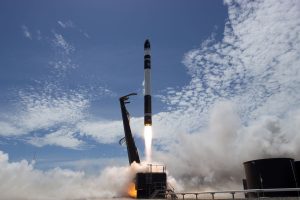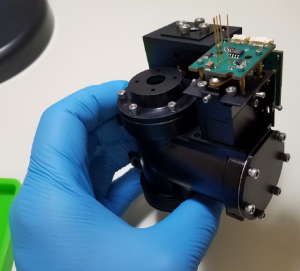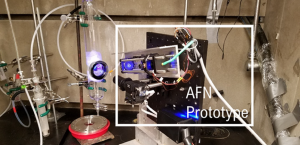Rocket Lab will launch a small probe to Venus aboard its Electron rocket to advance the search for life signs beyond Earth. The probe will be a sounder, dropped off into the Venus atmosphere with a mission lifetime of about 5 minutes. This is the first-ever private mission beyond Earth orbit with a strong public-private partnership at its core, pioneering low-cost space exploration.

Target Launch Date: January 2025
Science Objectives
Objective #1: Search for the presence of organic material within cloud-layer particles as a function of altitude
Autofluorescence is a way to detect (but not identify) organics inside cloud droplets on Venus. Many organic compounds are known to fluoresce when subject to UV, owing to delocalized ring electrons. Toward this goal, the probe will identify UV autofluorescence in cloud particles, if present.
Objective #2: Seek anomalous cloud components, including aspherical particles, and their relative abundance as a function of altitude
Aspherical particles are not pure liquid and therefore cannot be pure sulfuric acid. Constraining particle composition can support evidence of habitable conditions inside cloud particles. Toward this goal, the probe will determine cloud particle size distribution, identify asphericity, and estimate the complex index of refraction of cloud particles as a function of altitude.
Instrument: AutoFluorescence Nephelometer (AFN)
Droplet Measurement Technologies is developing the AFN, leveraging their decades of experience with cloud measurement solutions.

Mass: < 1 kg
Power: < 50 W
Measurement: Measure scattered light of 440 nm wavelength and fluorescence of in 470 to 520 nm wavelength range from single aerosol particles
Scientific output: Detect and derive particle size and number density, derive complex reflective index, quantify asphericity of particles, and detect fluorescence from particles
Simulating sulfuric acid aerosols
A team at the University of Colorado Boulder, led by Prof. Margaret Tolbert, is simulating the sulfuric acid aerosols to test the capabilities of the AFN.

More information …
French, R.; Mandy, C.; Hunter, R.; Mosleh, E.; Sinclair, D.; Beck, P.; Seager, S.; Petkowski, J.J.; Carr, C.E.; Grinspoon, D.H.; Baumgardner, D.; on behalf of the Rocket Lab Venus Team. Rocket Lab Mission to Venus. Aerospace 2022, 9, 445. https://doi.org/10.3390/aerospace9080445
Baumgardner, D.; Fisher, T.; Newton, R.; Roden, C.; Zmarzly, P.; Seager, S.; Petkowski, J.J.; Carr, C.E.; Špaček, J.; Benner, S.A.; Tolbert, M.A.; Jansen, K.; Grinspoon, D.H.; Mandy, C. Deducing the Composition of Venus Cloud Particles with the Autofluorescence Nephelometer (AFN). Aerospace 2022, 9, 492. https://doi.org/10.3390/aerospace9090492
Rocket Lab Mission to Venus poster presented at the 2023 Venus Surface and Atmosphere Conference
Spacek, Jan. “Organic Carbon Cycle in the Atmosphere of Venus.” arXiv preprint arXiv:2108.02286 (2021).
